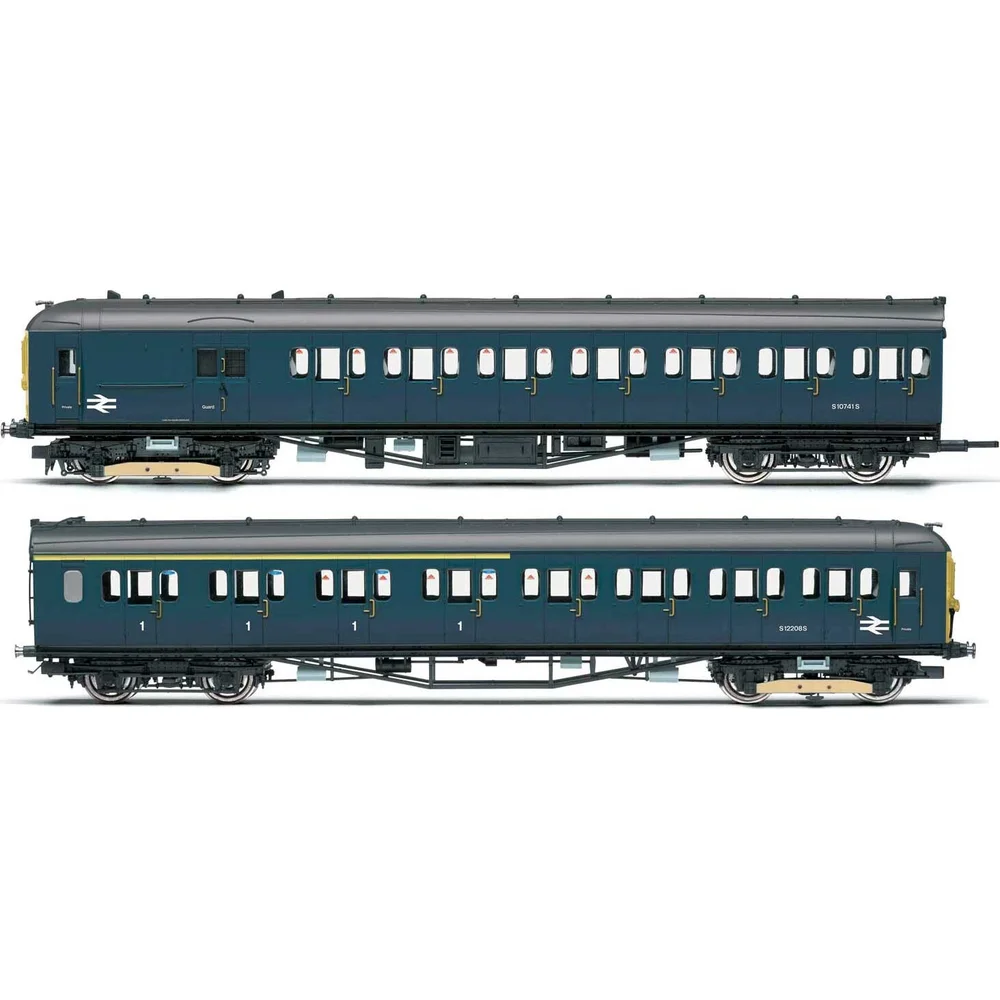Hornby R3341A
British Rail Class 402 2623 British Rail Blue
Class & Prototype
- Class: British Rail Class 402
- Traction: Electric Multiple Unit
- Built: 1938-1955
- Total Built: 100
- Running Number: 2623
The Southern Railway's 2-HAL electric multiple units were purpose-built for the 1939 Kent Coast electrification, serving commuter routes from London Victoria to Maidstone and Gillingham until 1971. These 100 two-car units featured distinctive domed ends, "Half Lavatory" configuration, and pioneered innovative split-working operations at Swanley. Powered by twin 275hp traction motors with 75mph capability, they established operational patterns still used by modern Southern Rail services. Despite 33 years of reliable service, no units survived preservation, making Hornby's OO gauge models the only way to experience these historically significant trains today.
Operator & Livery
- Operator: British Rail
- Livery: Blue
- Era: 6/7
British Rail (1965-1997) transformed Britain's railways through revolutionary modernisation, introducing the iconic double arrow logo, Rail Blue livery, and business sectorisation. BR pioneered high-speed rail with the InterCity 125 and Advanced Passenger Train, electrified major routes, and created profitable divisions like InterCity and Network SouthEast. From steam succession through diesel and electric development to privatisation preparation, British Rail's diverse locomotive fleet, multiple livery schemes, and operational scenarios provide unparalleled variety for railway modellers across all scales and periods.
BR Blue, also known as Rail Blue or Monastral Blue, was introduced in 1965 as part of British Rail's comprehensive corporate identity overhaul that accompanied the rebranding from British Railways to British Rail. The colour was officially defined by British Standards BR28/6001 (airless spray finish) and BR28/5321 (brush finish), representing a dark, greyish blue tone specifically chosen to hide dirt and weathering effects well.
The livery was prototyped on the experimental XP64 train in 1964 before becoming the standard scheme from 1 January 1965. Rail Blue was applied to all diesel and electric locomotives with yellow warning panels (initially small, then extending to full yellow ends from 1966). The standardised application included the iconic double arrow logo and Rail Alphabet typeface, creating one of the most successful transport corporate identities of the 20th century.
The livery dominated British Rail operations for over two decades until sectorisation in the 1980s began fragmenting the unified appearance. Despite initial colour fading problems in early applications, these were resolved by the late 1970s when the Large Logo variant was introduced featuring extended yellow areas and full-height double arrow symbols. Rail Blue's enduring appeal among railway enthusiasts reflects its role as the definitive British Rail image during the organisation's most unified period.
